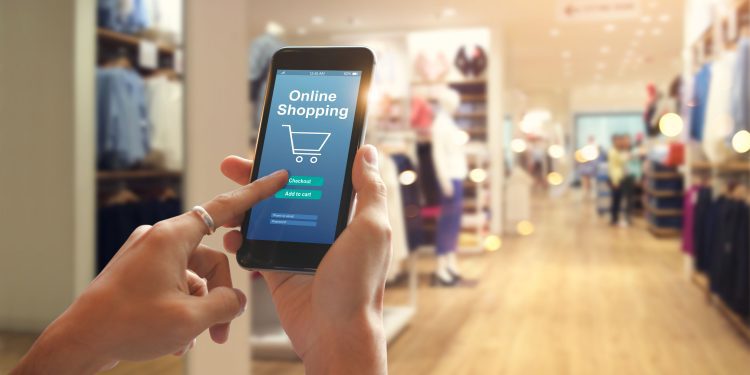It has never been more important for businesses to align themselves with the needs and preferences of their consumers. We are emerging from the pandemic with different retail payments and shopping expectations. They have been shaped by ongoing digitization in the previous two years.
Alongside this, consumers are more worried than ever about parting with their money. The cost-of-living crisis and unpredictable market forces in the UK have spooked many into delaying large purchases. They are waiting until there is more certainty about what they can and can’t afford. Data from FSB has shown that 53.4% of SMEs and independent businesses predict that they will either stay the same size, downsize or even close their business in the next year.
To help address the challenges coming down the line regarding conversions, changes must be made. Merchants and businesses must provide their customers with payment experiences that center around convenience, speed, and security.
Avoiding Festive Fear
Already we are seeing an impact of the cost-of-living crisis. Merchants are looking to the holiday shopping season. It is integral to ensure a thorough analysis of how consumers are choosing to shop during these unpredictable times.
There has been a general plateau in consumer spend following the boom in eCommerce spending during the pandemic. Data from the ONS has found that retail sales fell 1.2% across the three months to July in 2022 as the cost-of-living crisis continued to bite across the UK.
To maximise revenue amid economic volatility, businesses must ensure that they offer seamless user experiences for their customers. They need to guarantee that expectations are being met, if not exceeded.
Understanding Your Audience’s Retail Payments Preferences
Three years ago, we were still thinking about millennials as the powerhouses with disposable income. However, Gen Z, 10 to 25 years old, is arguably one of the largest groups with disposable income. Young adults in their early 20s, typically, have less dependants and accrued debt than other age groups.
Therefore, it’s important to capture the needs of this audience when they are making a purchase. Do this by offering them preferred ways to pay. In a recent study we put out, we found that younger generations are more likely to favor new payment methods, such as digital wallets, than their older counterparts. The data also suggests that young consumers are fueling the subscription economy. They are taking out more subscriptions on average in 2020 and spending more on a monthly basis.
Gen Z as well as millennials are also much more likely to favour Buy Now, Pay Later (BNPL) services. However, we look at those shopping in-store. Those who said they are likely to return to the high street to shop post-pandemic also expressed a preference for BNPL. This highlights the importance of unified commerce processes.
Knowing who your customers are is integral to further growth as we enter today’s era of shopping. Recognizing your customer demographic can efficiently ensure that you meet preferred payment methods in the appropriate sales channels.
Accommodating Buyers Regret … At Least in the Short Term
During the pandemic, when consumers could not try on items before buying them in-store, they got used to over-purchasing. They sometimes buy the same item in multiple sizes and colours. Consumers have the intention of returning items that did not suit them. They enjoy the convenience of not having to go into the high street, find and pay for parking and carry bags around while on a shopping spree. This has continued post-lockdown, with the over purchasing behaviours remaining. This has put retailers under further strain. This is at a time where margins are squeezed due to inflation and increased costs in the supply chain, among other factors.
In fact, it’s now becoming unviable for retailers to offer free returns and we have seen household names such as Boohoo, Zara, and Next withdrawing free returns. To remain competitive, the returns process must be as frictionless as possible. Retailers who want to keep free returns for their customers as part of their customer loyalty strategy therefore need to take action now. This will minimize the number of products being returned.
Clarity Brings Results
Clarity of what will be delivered is the best way to reduce large volumes of returns, as customers can better judge if they will like an item when it arrives. Making detailed product descriptions and reviews available and visible means consumers are more informed on what they will receive before they buy. What’s more, at a time when profit margins are wafer thin, it’s critical for retailers to be as efficient as possible. Working closely with their payments partner to optimise their payment strategy, retailers can improve their payment flow and maximise their bottom-line. This efficiency means they can issue refunds in a timely manner to avoid chargebacks, which can disrupt cashflow and, at worse, result in fines. At the same time, if retailers believe they have adequately delivered their product or service, they should have the confidence to defend chargeback claims with their payment partner’s guidance and support.
If free returns aren’t viable for a business, having a clear return policy is key. Making it clear that there will be charges for returns. People may only buy items that they think they will keep.
It Pays to Prioritize Customer Demands for Retail Payments
Whether your customers browse your products via their desktop computers, tablets, or smartphones, you must enable them to pay how they want. Start by partnering with a payments provider equipped with the market knowledge and technology that caters to consumer demands. Giving customers a consistent, effortless experience across any channel should be paramount.
Optimizing payment strategies is integral to the shopping experience of the future. We are bracing for an uncertain winter ahead in the current economic climate. The future of retail will be heavily reliant on enabling easy purchases where payments are invisible. A simple, seamless, and frictionless journey.










